This article is your complete guide to installing the best solar battery for your business. Because if you’ve taken the plunge and invested in installing solar panels for your business, we recommend you look into installing an energy storage system using a solar battery to maximize the benefits of using renewable energy. Battery energy storage, in general, is always a smart decision as it improves the reliability of your power source and helps decrease your energy bill while increasing your sustainability.
As energy technology continues to advance, it’s important to keep up with renewable energy trends and innovations available to you that will upgrade the way you manage your energy consumption. At Aggressive Energy, we have access to the most efficient energy resources and are dedicated to creating an energy plan that maximizes our client’s ROI. Contact us today to see what we can do for you!
If you’re ready to learn more about solar battery energy storage systems, read on!
What is a Battery Energy System?

Battery energy storage systems store excess energy generated by solar panels and/or other renewable power sources to use when needed later. They typically include built-in software that is used to operate and control the system. With their simple installation and low level of required maintenance, we believe solar batteries are the future of energy storage.
How do solar battery backups work?
- The battery is charged by solar panels
- The system software optimizes the use of stored solar energy
- Stored energy is discharged when you need it, and/or at the most cost-effective times
So instead of transferring any unused solar energy to the grid, you’ll use that energy to charge your solar battery storage system. Then, if you use electricity after the sun has set, you’ll draw from your solar battery instead of the grid.
Advantages of Solar Battery Energy Storage Systems
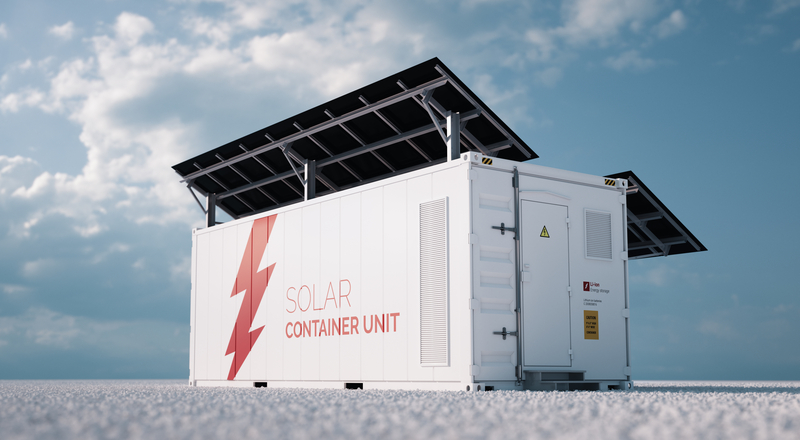
With a solar battery energy storage system, you’ll have the option of using electricity from the grid or your solar battery. This gives consumers more power over their energy consumption and monthly bill. Here are the main advantages of battery energy storage systems.
Batteries allow you to peak-shave energy prices
You can save a lot of money with on-site battery energy storage by charging the batteries during off-peak hours when electricity pricing is the cheapest. This process is called peak-shaving because it allows you to use energy during peak hours without paying peak price. Batteries can accomplish this in two ways depending on the type of rate plan you’re on. If you are on a time-of-use or other time-varying rate, you can draw electricity from your solar battery during periods during peak hours. If you are on a demand charge rate – which is more common for commercial businesses – battery storage can help you save money each month by lowering your demand fee.
Related Post: When is the Cheapest Time to Use Electricity?
Storage battery systems help reduce carbon footprint
Not only do batteries make it easy to use energy efficiently by making sure you use what you generate, but they’re also a great way to operate sustainably. Renewable energy battery storage for resources like solar power decreases your energy system’s reliance on the grid, which was powered only 12% by renewable resources in 2020. It ensures that you use all of the clean energy generated from your solar panels, making you less likely to use nonrenewable resources thus cutting down your direct and indirect carbon emissions.
Battery storage gives peace of mind during outages
While you will remain connected to the grid, you will be able to function “off-grid.” By using a combination of solar power and energy storage you’ll be able to keep your power on and functioning normally, even during a storm or power outage. If you only have a solar panel system without a battery and there’s a power outage, then you’ll be without power, even on a sunny day. This is because your solar panel system will automatically shut down during a power outage to avoid sending electricity onto transmission lines to reduce risk for utility personnel as they attempt to repair them.
Related Post: Local Law 92 and 94 Compliance: What is a Green Roof?
Do You Need a Solar Panel Battery Storage System?

Now that you understand how battery storage works, it’s important to give some thought to if you actually need to install it at your business and how you plan to use the energy. Here are some of the most common reasons business owners tend to install solar power battery storage at their building:
- Business owners looking to power their entire business with off-peak priced electricity stored on the battery storage system
- Business owners looking to become energy efficient
- Business owners looking to power a specific piece of equipment
- Business owners looking to maximize their ROI on solar equipment upgrade
How to Choose the Best Solar Battery For You

When researching the best battery energy storage options, there are a variety of possible decision criteria and comparative points to consider. Below are a few things to keep in mind as you make your decision.
Solar battery life expectancy
The battery’s lifespan is essentially how long it will store energy. Solar battery units have a lifespan of between five and fifteen years, while solar panels have a lifespan of about 25 years. However, your batteries life expectancy can possibly be extended depending on the type of battery it is, its usage cycle, the temperature of the location in which it’s installed, its warranty, and how often it goes through maintenance.
Battery round-trip efficiency
The round-trip efficiency of a storage system is the percentage of electricity stored that is later retrieved. The greater round-trip efficiency a battery has, the less energy it loses during the storing process. Every electrical process involves losses, which means that you will lose some kWh of electricity when inverting it from direct current to alternating current, or when putting electricity into and then taking it out of a battery.
Related Post: Building Energy Management Systems: A Definitive Guide
Solar battery storage capacity
Always look for a battery’s useable capacity, as this indicates the amount of stored electricity that the battery can actually access. This is the amount of electricity that it can store and supply to your building. While power is measured in kW, storage capacity is measured in kWh, which is equal to power multiplied by time. The more power you use from the battery’s stores, the faster you deplete your stored energy. So just be sure you consider how often you plan to use the solar panel battery storage system so you know what storage capacity you need.
Find the best battery storage company
You can research this on your own, or you can utilize the knowledge of a trusted energy provider like Aggressive Energy. We’ll help you compare the types of solar batteries available to you to ensure you choose one from the highest-quality manufacturer. Reach out to our team today to get started!
This article is your complete guide to understanding the question, “is natural gas renewable?” When is comes to fuel sources, it can be quite difficult to understand if natural gas renewable or nonrenewable.
So is natural gas renewable? There isn’t simple yes or no answer. The main reason is it depends on how the natural gas was extracted for use. In this blog post, we’ll cover the basics of what natural gas is, what forms of natural gas are renewable and nonrenewable, and why it matters.
Aggressive Energy is committed to helping our clients make the most sustainable choices for their energy consumption and their budget. Whether you’re looking for ways to use natural gas responsibly or looking to make a switch, we guarantee we’ll create an energy plan that works for you.
Read on to learn if natural gas is renewable or nonrenewable and more!
What is Natural Gas?

When wondering is natural gas is renewable, you have to understand what it is! Natural gas is a a naturally occurring hydrocarbon that humans can use as a fuel source. This gas is odorless and colorless and can be very dangerous if not handled properly.
Where does natural gas come from?
So, how is natural gas formed? The process might not be what you think. Natural gas is a fossil fuel energy source. These fuels are formed from the decomposition of plants and animals that were entombed deep beneath the Earth. Eventually, after thousands (sometimes millions) of years, they fossilized and became natural sources of energy. However, because natural gas is found exclusively in reserves deep beneath the Earth’s surface, it’s not very convenient to extract. As a result, it causes environmental harm in the process.
Related Post: Renewable Energy Trends 2021
Is Natural Gas Renewable? – What is Natural Gas Used For?

The United States uses natural gas largely to produce heat and generate electricity. Therefore, it is smart to ask if natural gas is renewable, because it is a common energy source in the US. In the commercial sector, the uses aren’t that different than a that of a residential home, but are done so on a much larger scale.
For example, they often use natural gas to power industrial-sized kitchen equipment and they have a lot more space to light and heat/cool than the average home. Plus, they’re typically powering these things for longer periods of time. In 2020, the commercial sector accounted for around 10% of all natural gas consumption in the United States, and natural gas was the source of 19% of the commercial sector’s total energy consumption.
What is the Most Common Natural Gas?
Methane is the most commonly used natural gas on Earth. Natural gas and crude oil wells are frequently filled with methane and as well as hydrocarbons like nitrogen and carbon dioxide that produce energy when burned. Though they differ in chemical structure, all of these gases can be utilized in the creation of energy under certain circumstances.
What’s the Difference Between Renewable and Nonrenewable Resources?

The difference between renewable and nonrenewable resources is that renewable resources are available infinitely and nonrenewable resources are not.
Renewable natural energy is an unlimited resource that will always continuously replenishes its supply on its own, no matter how much of it we use. Because there’s an infinite amount of these resources and they’re harnessed naturally, renewable energy sources are considered to be the green, sustainable alternative to fossil fuels such as natural gas, coal, and oil. Examples of renewable resources include wind power, solar power, hydropower (water), to name a few.
As we mentioned earlier, nonrenewable energy is comprised of fossil fuels, which use fossils as their power source. On average, fossils take about 10,000 years to form. So once we use the natural gas found inside of the Earth, we won’t be able to replenish the amount we used for thousands of years.
Examples of Renewable and Nonrenewable Resources
Renewable resources
- Solar energy
- Wind power
- Hydroelectric power
- Geothermal
- Biomass energy
Nonrenewable resources
- Oil
- Coal
- Nuclear
- Natural Gas
Related Post: Benefits of Using Clean Energy
Is Natural Gas Renewable or Nonrenewable?
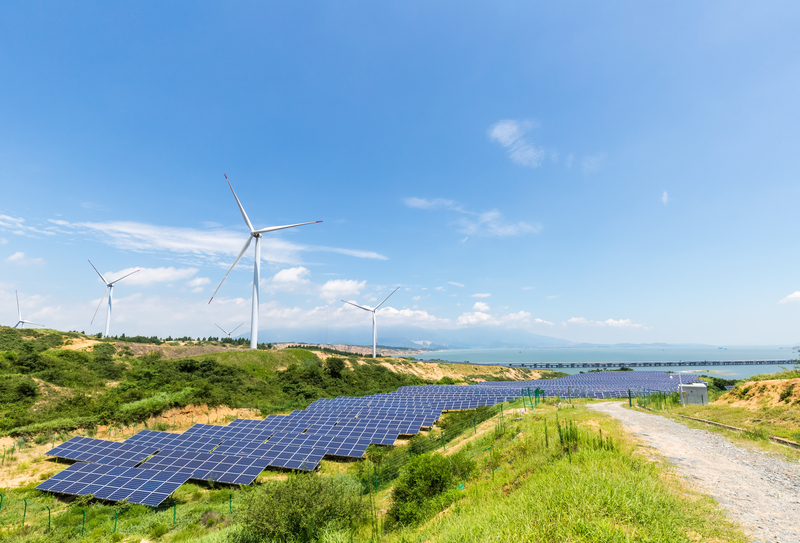
The short answer is no, the most commonly used natural gas is not a renewable resource because it comes from fossil fuels, which makes it a nonrenewable resource. However, there are two different types of natural gas that can be used for power: Natural gas produced from fossil fuels or produced from biomethane. However, it’s important to note here that renewable resources are not always the most sustainable or clean energy options.
How is biomethane made?
Biomethane, or renewable natural gas, is made by the biogas that’s extracted from decaying organic materials such as human waste. Basically, it’s powered by things such as landfills and farms where waste is constantly being replenished. This is why biomethane-produced natural gas is considered renewable but isn’t the greenest alternative since it’s powered by landfills.
How much natural gas is left?
There are 6,923 trillion cubic feet of nonrenewable natural gas reserves left in the world as of 2017. Based on global consumption rates, that will last us about 52 years. As time goes by and those reserves dwindle, the price of using natural gas will increase both in monetary costs and environmental costs.
Is Natural Gas Bad?

When we burn natural gas, greenhouse gases like carbon dioxide are released into the environment. Though natural gas doesn’t emit as much greenhouse gas as coal or oil, these emissions harm the environment and cause climate change because they trap heat from the sun close to the Earth’s surface, heating its temperature. It also pollutes the air, which harms the health of our environment as well as the health of our crops, animals, and our respiratory systems.
Why should we stop climate change?
If you’re already wondering if natural gas is renewable, then you’re probably conscious about climate change already. The negative effects of global warming will continue to increase the number of wildfires each year and longer periods of drought in some areas, and more intense tropical storms and flooding in others. Flooding could be caused in two ways – by heavier rainfall and by melting ice in areas like the Arctic Sea – which increases the risk of major cities being flooded. Not to mention the impact on our food supply if we can’t grow many crops to feed us as well as the animals we eat.
How long do we have to stop climate change?
Scientists believe we have until 2050 to reduce our carbon emissions. As a result, more and more world leaders are committing to doing their part in their respective countries, including President Biden in the United States. In April 2021, he committed to reducing U.S. carbon emissions by 50% by the year 2030, which means we have to adjust our energy consumption and management now.
Related Post: How to Make Reducing Carbon Emissions a Priority
Is it Ethical to Use Natural Gas?

Natural gas, renewable or nonrenewable, can be used ethically as long as it’s used responsibly. That means monitoring and reducing your energy consumption and switching to green energy sources wherever possible. You can conserve energy in your building by replacing things such as regular light bulbs with energy-efficient ones, or by installing an energy management system to ensure you’re only using a set amount of energy.
Why are fossil fuels considered nonrenewable?
The answer is – they take forever to make! While the natural process of creating fossil fuels is always happening, it takes millions of years to complete. Therefore, we are depleting these natural resources before they have time to regenerate. That is why fossil fuels are considered nonrenewable!
Tap Into Our Energy Expertise
Are you ready to become more energy efficient? Speak with an expert at Aggressive Energy by calling our office at 888-836-9222 or leaving us a message on our contact us page! Aggressive Energy offers a variety of energy plans for small businesses as well as energy efficient upgrades for commercial buildings.
You can also check out The Energy Professor if you’re looking to save money on your next electric bill with their Energy Savings Tool!
As 2021 progresses, it’s important to look at renewable energy trends from the last 12 months to help us get an idea of the future of renewable resources and the sustainable energy sector. In this article, we’ll examine green energy stats from 2020 and the sustainable energy trends that have carried over to 2021 in an effort to inform you, so that you’re able to create the necessary sustainability goals for your business.
At Aggressive Energy, we’re experts on alternative energy. We’re committed to educating our customers on the many benefits of using clean energy and working collaboratively to meet your energy goals.
Read on to learn about trends in the renewable energy industry!
Overview of 2020 Renewable Energy Stats

- Total US energy consumption dropped 7.8%, which was the largest decline in 30 years.
- Renewable energy sources had a record-breaking 11% year-on-year rise in power grid contributions.
- Renewable sources generated one-fifth of total U.S. power.
- Coal’s contribution to U.S. power generation fell to 19%.
- Wind and solar power built a combined 33.6 GW, exceeding their previous records despite a rocky start to the year.
- Over 100 companies made decarbonization commitments – 65 companies joined the RE100 initiative, while 59 joined EP100.
Renewable Energy Trends
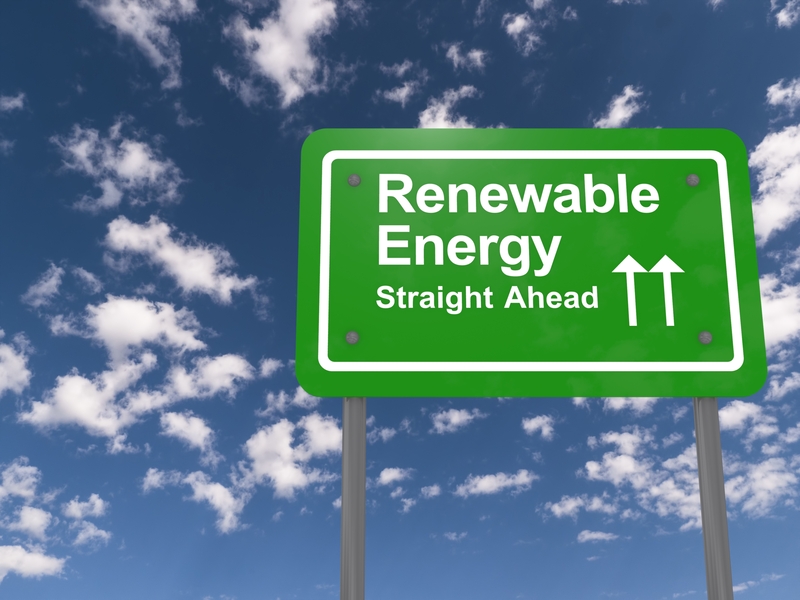
The Renewable Energy Industry Proved Itself
Like every industry, the Covid-19 pandemic created a number of hurdles for the sustainable energy sector that threatened its progress. In the second quarter of 2o20, several wind power and solar energy equipment manufacturing plants experienced declined (or halted) production. Other renewable energy projects faced similar declines in activitiy, including a significant drop in solar panel installation rates. By July, it looked like 2020 would be the least productive year for the renewable energy industry by far.
Miraculously, 2020 ended up being the industry’s most productive year yet. The solar power sector reached a new high of 16.5 GW capacity built, while the wind energy sector constructed a whopping 17.1 GW of capacity. Renewable energy trends show a steady rise in contribution to U.S. energy production and highlight increased endurance across the sector as a whole.
This is apparent not just from the way it was able to bounce back, but also because it was able to do so while its manufacturers simultaneously focused their efforts on ensuring Covid-19 testing sites were efficiently powered and heated.
Related Post: Why Solar Power For Business Is Worth The Investment
Companies With Renewable Energy Goals

Over the last few years, more and more companies have made public statements claiming support for the green energy movement. However, simply stating your support for clean energy is no longer enough. Big corporations know this, which is why companies are going a step further and committing to renewable energy goals that have tangible results.
The RE100 and EP 100 initiatives
As a result, 65 companies joined the Climate Group’s RE100 initiative, which pledges to offset the entirety of their energy consumption with renewables. This brought the total number of companies to 285. Additionally, 59 companies joined the EP100 campaign. With a total of 123 companies, EP100 pledges to double their energy productivity by 2030.
Green energy contracts signings declined
Due to the pandemic, a large portion of the nation’s workforce went remote. This resulted in the number of signed carbon-free energy contracts dropping for the first time in five years. Many companies don’t know the capacity in which their employees will return to the office, if they do at all. Not knowing their energy needs definitely plays a role in this energy trend.
Even with less signed contracts, companies know that it’s no longer enough to make promises with no follow-through. Their customers and employees expect to see a bigger commitment from them as well as a plan for it. Plus with government-mandated emission reduction requirements and clean energy tax credits available, they don’t have much room to not commit to green energy sources.
Long-Term Decarbonization Policies
In December 2020, Congress passed the second Covid-19 relief stimulus package. While the first package did not include any renewable energy incentives, the second one included massive grants for U.S. Energy Department research. It also expanded renewable resources and carbon capture technologies tax credits. Specifically, the solar and wind production tax credit (PTC) and the investment tax credit (ITC).
PTC and ITC for land-based wind were extended for one year at 60% of the project’s full value, while solar ITC was extended two years at 26%. Tax credit for carbon capture was also extended by two years. The legislation also limited hydrofluorocarbon emissions, which is a huge step in the right direction to fight climate change.
In 2021, the Biden administration has set the stage to convert renewable energy trends into real growth for the sustainable energy sector. After making climate change a main focus of his campaign, President Biden re-committed the U.S. to the Paris Climate Agreement. He also introduced the American Jobs Plan, a $2 trillion infrastructure proposal. If signed into law, the plan would be one of the biggest government attempts to reduce carbon dioxide emissions – something he recently pledged to cut in half by 2030.
Green Energy Innovations Make Renewable Energy More Accessible

By now, it’s safe to say that most people are on board with renewable energy trends. However, for some people, clean energy just isn’t as accessible or cheap as fossil fuels due to limited access in their location. Green energy innovations have skyrocketed accessibility by introducing more and more alternatives to the energy market.
All the recent investments into new trends in renewable energy technologies have expedited the commercialization timeline of clean energy. As a result, we’re seeing more and more up-and-coming renewable energy companies emerge. A lot of these are traditional energy companies joining the market as multi-sector providers, which is predicted to streamline the eventual merge of the renewable energy sector with the traditional.
This allows energy providers like us to create hybrid plans for customers that help them make the switch from nonrenewable to renewable resource electricity over a longer period of time. At Aggressive Energy, we’ll i
Contact us today to learn how we can work for you!
Reducing carbon emissions is key to combat climate change. With so many businesses and individuals interested in how to solve climate change we wanted to take some time to explain how you can make an impact.
In this article, we’ll cover all the basics of what carbon dioxide emissions from buildings are and why reducing greenhouse gas emissions is well worth the investment. We hope you find this information helpful and please be sure to reach out to us to learn how we can help you increase your energy efficiency and decrease your carbon emissions!
So if you’re ready to learn about how to combat climate change read on!
What Are Carbon Emissions?
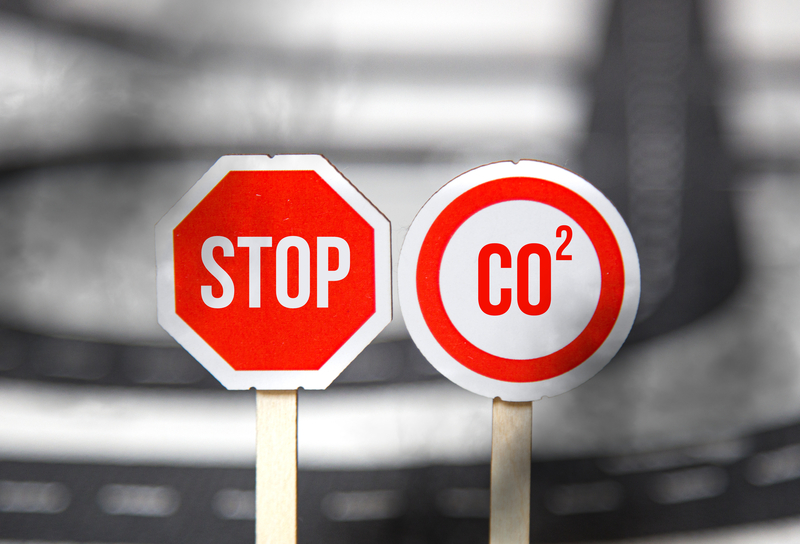
Carbon emissions refer to the release of carbon dioxide into the air during the combustion of fossil fuels. They make up the majority of greenhouse gas emissions, which is the biggest cause of climate change. The amount of greenhouse emissions made by a building, city, country, and so on is known as its carbon footprint.
What causes carbon emissions?
CO2 emissions occur during the combustion, or burning, of fossil fuels such as coal, natural gas, and oil. Another huge factor is forest degradation. When trees are destroyed, their carbon is released into the atmosphere as carbon dioxide.
How do carbon emissions cause climate change?
High levels of carbon dioxide emission cause climate change by trapping heat from the sun close to the surface of the Earth, heating its temperature. Climate change is essentially the catch-all term for global warming, intensified natural disasters, rising sea levels, infertile soil for agriculture, and more.
Related Post: Energy Conservation Tips to Reduce Business Expenses
How Much Do Buildings Account for Carbon Emissions?
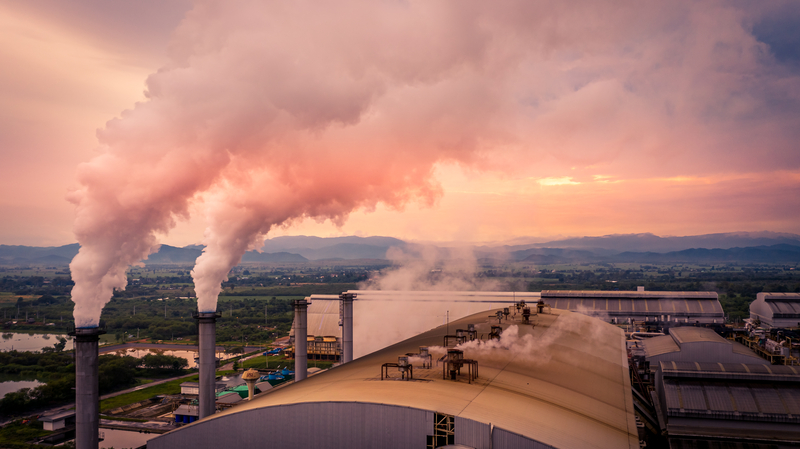
In 2019, energy consumption from all buildings – commercial and residential – indirectly accounted for over 30% of all US carbon emissions. This amount was an all-time high. 2020 would have probably looked similar, but US and world greenhouse gas emissions plunged as a result of the COVID-19 pandemic. Buildings contribute to emissions in two ways.
- Direct emissions are a result of burning fossil fuels like natural gas for heat.
- Indirect emissions are a result of using energy from power plants that burn fuel to generate electricity.
Directly, buildings account for about 12.5% of greenhouse gas emissions in the US.
How to Start Reducing Carbon Emissions

Reducing greenhouse gas emissions from buildings as a building owner is intimidating, to say the least. You’re in an unprecedented position. The good news is, you’re not alone. More and more companies are recognizing the need for change and calling for action.
However, just because you recognize the need doesn’t mean you know how to actually take action. That’s why we’re giving you some actionable items to implement as steps of your very own emissions reduction plan.
Review state guidelines for energy code compliance
President Biden’s recent commitment to reduce the carbon footprint of the United States and cut 50% by 2030 as part of the country’s pledge to the Paris climate agreement is not the only thing you need to be aware of. Each state has a set of energy codes for buildings.
The energy codes help in reducing carbon emissions from construction as well as buildings. State and local governments oversee energy code compliance, so be sure to research codes and benchmarking requirements for your area. This will help you get an idea of what your next steps should be.
If you’re a building owner in New York City, you’ll need to know about compliance with local laws, such as Local Law 97 which was created in an effort to combat the city’s extreme levels of CO2 emission. If you’re not in NYC, it’s still a good idea to read the requirements these local laws set there. They may not apply to you, but you’ll get a decent understanding of what to potentially expect from your own city in the future.
Start the switch to carbon-free energy
Carbon-free energy is found in green energy sources like hydro, wind, and solar power. These energy sources do not emit carbon dioxide when they’re converted into electricity. You can reduce carbon dioxide emissions from buildings directly by doing things such as installing solar panels and switching from natural gas.
For this step, it’s a good idea to include your energy provider in the conversation. If they’re anything like we are at Aggressive Energy, they’ll help you identify any areas in your energy infrastructure that could be done cleaner and more sustainable. If they’re not like us, give us a call and we’ll get you on the right track!
Set specific (but attainable) goals
Remember, you don’t have to come up with a detailed plan in one sitting. On the other hand, you also shouldn’t wait much longer to get started. There are plenty of ways you can start small. After doing your research, start assessing your current energy infrastructure. Your plan may be pretty straightforward, or it might require a bit of time and investment.
Whichever it is, take it step by step and create a plan to reduce emissions that’s sustainable to your business. Break down the overarching goal into separate milestones big or small, then hold yourself accountable to reaching them
Is Reducing Carbon Emissions Worth The Cost?
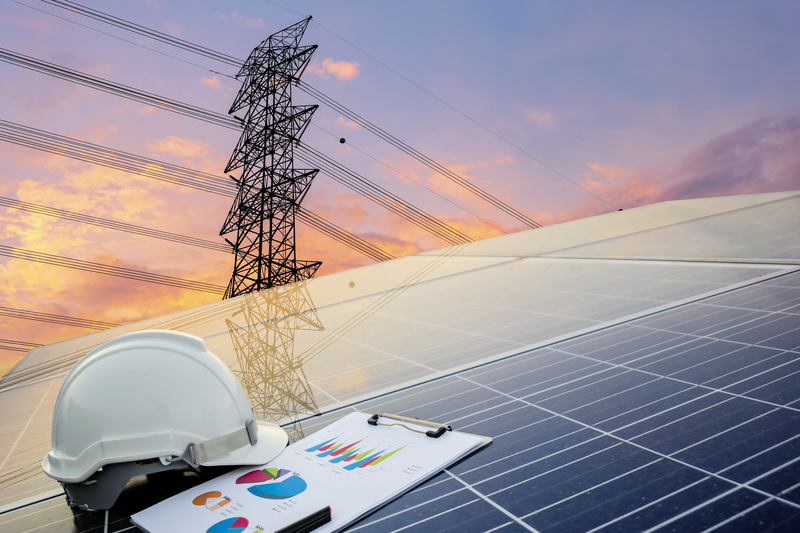
The only perceivable downside to fighting climate change is the upfront cost. However, the future of our planet depends largely on the actions we take to reduce greenhouse gas emissions over the next decade.
The cost may still seem alarming, but keep in mind the return on investment will counteract that in the long run. Renewable resources will cost your business less than if you were to continue to use fossil fuels.
That’s not the only long-term benefit, either. The Biden administration is placing a lot of emphasis on creating clean energy industry jobs through their efforts to combat climate change. Investing in reducing carbon emissions is also an investment in the clean energy industry that creates jobs in your community.
When creating a plan to make carbon-free energy a priority, having an experienced energy provider will save you an abundance of stress. At Aggressive Energy, we’ll help you set and meet even the most ambitious energy management goals at a pace that works best for you.
We understand the commitment it takes to power a business, which is why we’re committed to giving our customers value-added services like 24/7 customer support. Whatever it is, we’ve got the resources to get you where you want to be.
Contact us today to learn how we can work for you!